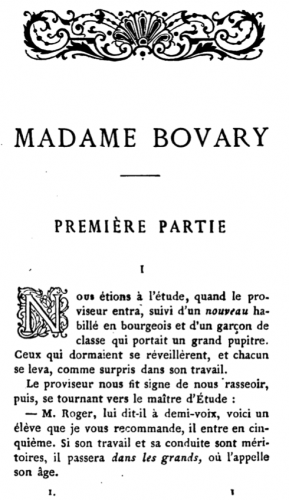What student of 19th-century literature doesn’t remember the striking portrayal of the young Charles Bovary that begins Flaubert’s 1857 novel? The opening passage – which depicts the child as an awkward “nouveau” joining a class of students younger than him – is particularly illustrative of Flaubert’s specific realist endeavor to portray meaning through description. In this case, Charles’s hat is the focal point from which we can draw an analysis of character and a foreboding suggestion of what would be his life-long shortcoming: to remain provincial.
Some questions to incite discussion in the classroom:
~ Narration: Quel est le point de vue? (Notez l’emploi du pronom nous: “Nous étions à l’étude…”)
~ Description: Quels traits du personnage le narrateur met-il en valeur? Quels adjectifs emploie-t-il? Quel est l’effet produit par les mots en italiques?
~ La casquette: Parlez du rôle de la description de la casquette. Le lecteur n’apprend le nom du nouveau qu’après cette description d’un objet. Qu’est-ce que cela donne à la présentation du personnage?
I am using this in a composition course for a unit on “le portrait,” the final project for which is a 2-page written portrait of a person of the students’ choosing. We’ll read the excerpt together and then in partners the students will discuss the above questions, as well as note descriptive phrases (adjectives, etc.) that they could use in their own compositions.
